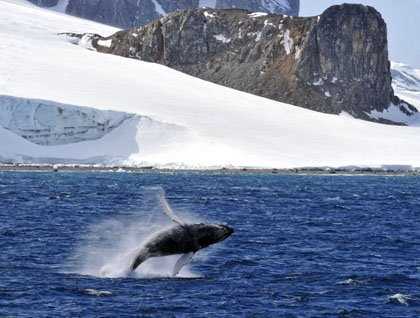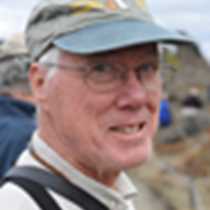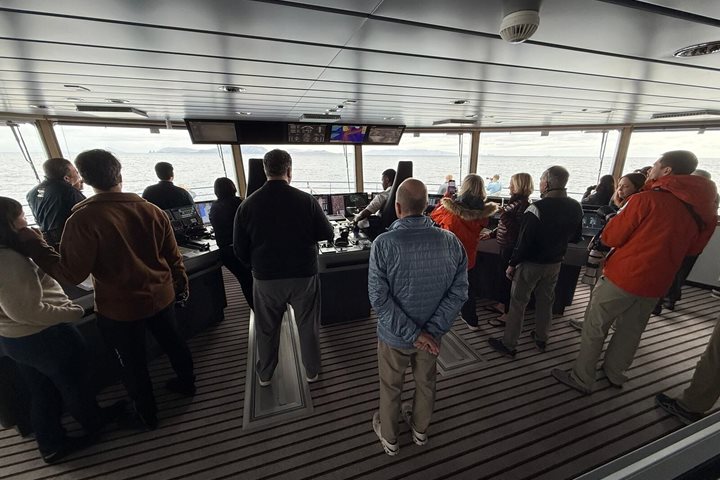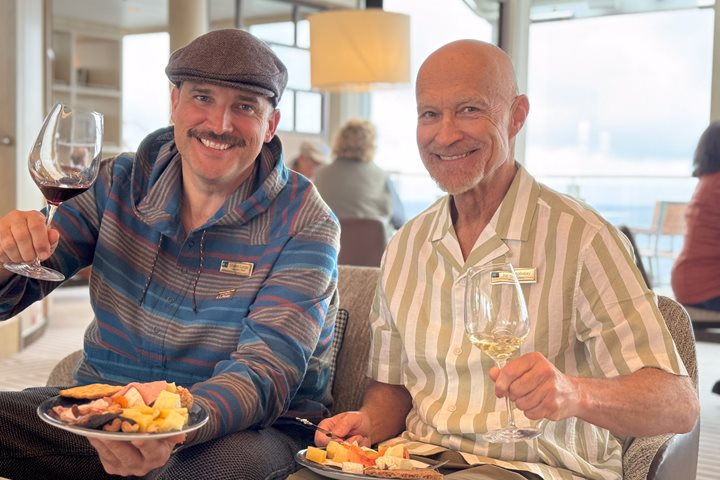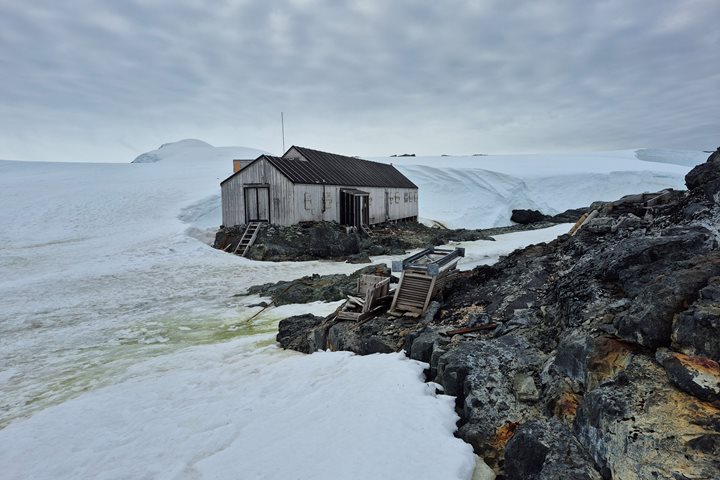One of the pleasures of being a naturalist in Antarctica is sharing with guests their first experience with the wildlife and the scenic grandeur of the White Continent. Today was such a moment.
After a relatively benign crossing of the infamous Drake Passage, we neared our first Antarctic landfall in the South Shetland Islands, north of the Antarctic Peninsula. We were not the only travelers coming to Antarctica from warmer climes. Humpback and the occasional fin whales were blowing their spouts into the morning wind as they approached their summer feeding in the productive Antarctic waters.
Soon, icebergs came into view, caught on the shallow shelf of the South Shetland Islands. Then, behind the icebergs and towering above them, came our first sighting of snow- and ice-covered peaks. Our course took us between Greenwich and Roberts islands, through English Strait. Here a young humpback whale put on a most incredible show by throwing its entire body from the water, again and again, in a series of breaches. We can't be sure just why the whales choose to leave their ocean domain, if only briefly, but that takes nothing from our joy of witnessing the behavior.
Half Moon Island, a small chunk of land tucked into a bay of Livingston Island, was the site of our first landing in Antarctica. After the crossing from Ushuaia, many were ready to brave wind and soft snow for a leg-stretching walk, which offered a breath-taking view over the snowy landscape (or maybe it was the walk itself that took our breath). Whether by foot or our fleet of Zodiac landing craft, we all ended at a chinstrap penguin colony. We mimicked the penguins in climbing resolutely up the snowy slope. The nesting penguins were gathered in exposed rocky areas where each pair places its two eggs on a platform of stones (many of them stolen from the nest of their neighbor), pecking distance apart. Now, the eggs have been laid.
The birds are in the early part of their 32-day incubation, and an unusual calm reigns over the colony. The calm is broken when one member of a pair returns from its feeding at sea to take over the chore of incubation. There is a noisy greeting at the nest ("Yes - I am, in fact, your mate, and I am back to do my duty") and the incubating bird rises to be quickly replaced on the eggs by the returning partner. If the process goes too slowly, they risk the quick attack of a marauding skua or kelp gull and an egg is lost. It will not be replaced.
Farther along, many of us chose to sit quietly and watch the parade of penguins, down the hill, up the hill. The parade will intensify as the eggs hatch and there are hungry chicks to be fed. Now, there is less urgency to the trek. I know not how many penguin photographs were taken; a lot.
Finally, at the end of our trail over Half Moon Island, we came upon three Weddell seals lounging on the snow. These large seals overwinter deep in the Antarctic, using breathing holes that they maintain through the seasonal sea ice. They have already completed their breeding for the year. The new pups, born on the sea ice, are on their own. The seals have earned their lounging.

